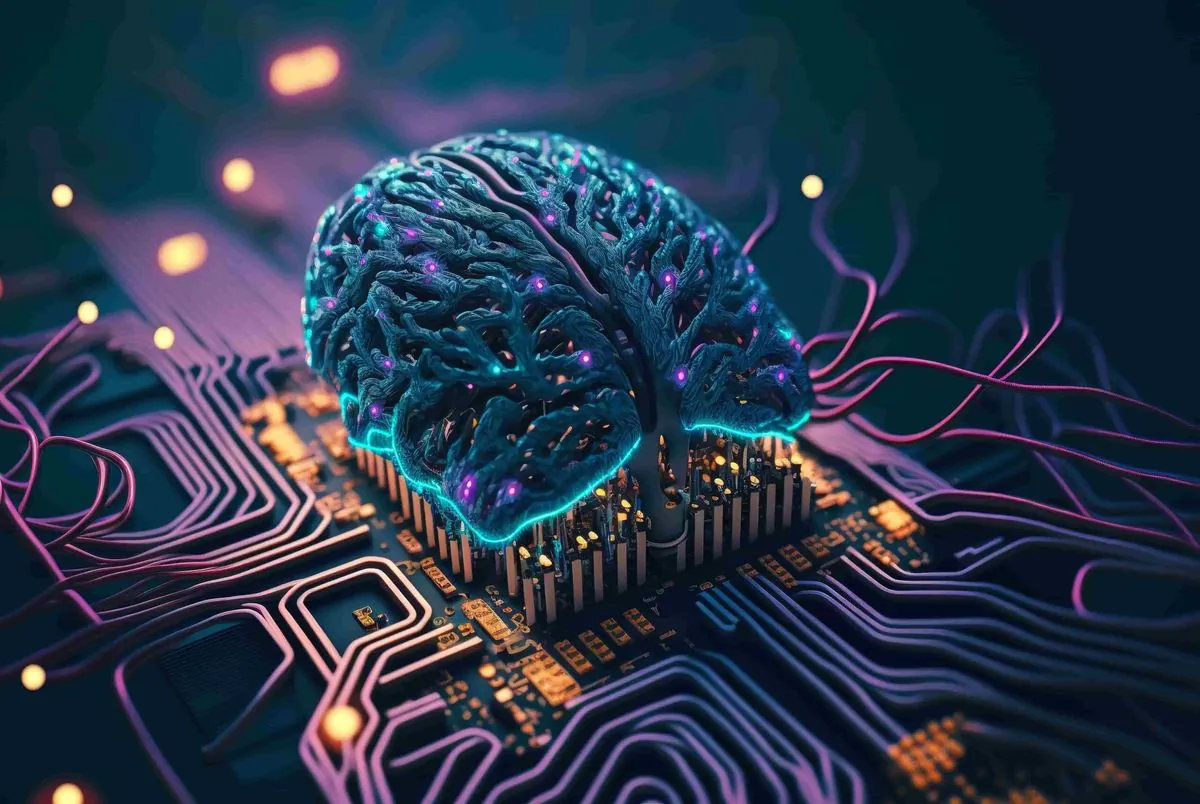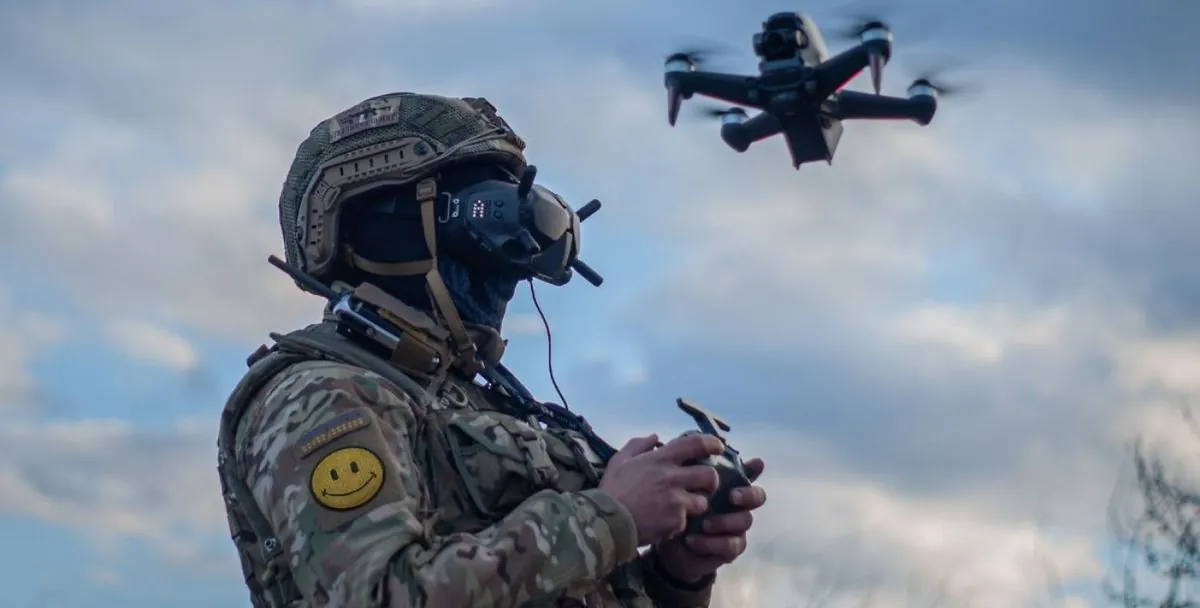Technologies that changed the battlefield: how Ukraine and the World integrated AI into the military sphere
Kyiv • UNN
Over the past few years, the world has moved from chatbots to neural networks, which in the context of modern technologies are able to perform many different tasks. UNN asked analyst Alexander Ochkasov what AI is, what is the role of Ukraine in the development of artificial intelligence technologies, and how it changes the modern battlefield.

Over the past few years, the world has been watching artificial intelligence evolve rapidly. The entire history of IS goes back at least several decades, but we can assume that the "AI era" began in 2017. Over the past few years, the world has moved from chatbots to neural networks, which in the conditions of modern technologies are able to perform many different tasks. What is AI and what is the role of Ukraine in the development of artificial intelligence technologies, UNN asked Alexander Ochkasov, a business analyst at it-Enterprise AI.

What is artificial intelligence?
Artificial intelligence is primarily a mathematical model that works on the principle of the human brain AI is able to learn, collect, process and classify information.
The founder of IS is considered to be Alan Turing, who was a recognized mathematician, cryptographer and one of the pioneers in the field of Computer Science
During World War II, Turing and his colleagues were able to develop a mechanism that helped crack the Enigma encryption machine. It was an invaluable contribution to the Allied victory in the war. According to the analyst, the scrapping of Enigma can be considered the first use of AI for military purposes.
AI can pretend to be stupider than it really is, scientists find10.04.24, 12:59 • 21247 views
The term itself was coined at a scientific conference by Allen Newell and Herbert Simon. These scientists presented the program "logical theorist", which imitated human thinking in solving problems. It was they who first started talking about "artificial intelligence"in 1956.
AI development is characterized by periods of ups and downs. There are known periods of slowdown in the development of AI (the winter of AI from 19740 to 1993) and the boom of AI. At the moment, we have another boom in AI development. The war in Ukraine has led to a significant acceleration in the development of AI in the military sphere
Today, neural networks generate whole Pictures, IS is able to translate and write texts, and chatbots can conduct a conversation no worse than a live person. However, Ukraine, and not only, actively uses all opportunities in the military sphere.
In particular , more than 1.8 thousand developments have already been registered on the Ukrainian platform of the Brave1 defense Cluster, and almost every eighth of them uses artificial intelligence.
Ochkasov noted that the classic possibilities for using AI in wars are similar to the use of AI in peaceful life.
- Analysis of large amounts of Data (Big Data). It is used for analyzing large amounts of information, searching for hidden patterns, and processing video, audio, and photos.
- Production of autonomous unmanned systems. In the military sphere, we are talking primarily about unmanned aerial vehicles and robots that can perform various tasks without direct control of military personnel.
- Cybersecurity. IS helps detect and protect military systems from cyber attacks, and guarantees cyber protection of critical infrastructures.
- Simulation and training. IS is used to create virtual environments for training military personnel and improving their skills in combat simulations.

As used in the war in Ukraine
Ochkasov explained that the most popular platforms for AI were drones, combat robots, fire control systems and systems for reconnaissance and target detection. Here it is worth considering in more detail the arsenal of the Defense Forces of Ukraine.
Undoubtedly, one of the most famous examples of the use of artificial intelligence was the Ukrainian long-range drones. Analysts believe that Ukraine uses drones with so-called "machine vision"to strike Russian refineries. Thanks to this, drones actually "learn" the geography of the route to the target.
Each UAV has an on-board computer with satellite data and terrain data. Flights are determined in advance with our allies, and the planes follow a flight plan that allows us to hit targets with an accuracy of one meter
Noah Sylvia, an analyst at the British RUSI Center, explained that such a UAV becomes completely autonomous and does not need to communicate with satellites.
However, analysts say that this is still a fairly low level of AI integration on the battlefield.
Drones have not yet had this level of autonomy, but we are still in the early stages of developing the potential of this technology."
But Ukraine went further and began to integrate such systems into smaller drones. Kamikaze drones equipped with "machine vision"began to appear on the battlefield. Military analysts noted that such UAVs probably have full protection from systems that go to the target autonomously.
Another example of the use of AI in the military sphere is OSINT (Open source intelligence).With the help of artificial intelligence, the Ukrainian OSINT community Molfar finds several new targets in the Russian Federation every day, writes The Economist.
AI is able to process a lot of information in a short period of time - it analyzes a bunch of images and text to find potential clues, combine them, and then assume the likely location of a weapons system or a formation of troops.
In addition, the community uses the semanticforce business monitoring platform. Thanks to IT, specialists create reports on the activities of Russian volunteer groups that raise funds and prepare aid packages for the most vulnerable sectors of the front.
Analyst Maxim Zrazhevsky says that Russian soldiers and military bloggers are becoming more cautious in their publications, which makes it difficult to find information that is important for conducting combat operations.
Another interesting solution from Ukrainian developers was the integration of artificial intelligence into mine clearance processes.
Specialists from UADamage use satellite images and artificial intelligence to digitize mined areas. AI identifies and classifies data about objects not only on the Earth's surface, but also deep below it, and automatically maps them. So mine clearance is accelerated tenfold and this process generally becomes safer for people.
UA Damage also conducts an inspection of digitized mined areas using a drone equipped with a camera. Thanks to this, the AI can also recognize and localize potentially explosive objects.
The company has already digitized thousands of square kilometers and developed a working prototype of the drone, which contains several sensors: an infrared camera, a conventional camera and a magnetometer.
And to further scale its projects to the whole country, UADamage needs additional funding and cooperation with the authorities.
This process (scaling - ED.) will be slow if it is not centralized. If the Ministry of economy or the Ministry of Defense comes to us with images, we will do it quickly enough for the whole of Ukraine

Not only Ukraine. Who else uses artificial intelligence in the military sphere?
Of course, Ukraine is not the only country that has decided to use artificial intelligence in the army. Increased defense capabilities, new capabilities, and resource savings are just a small part of what AI offers. Obviously, world leaders are actively fighting, if not for a monopoly, then for primacy in the issue of artificial intelligence and its capabilities in the military sphere.
In particular, tests of an aircraft with artificial intelligence for air combat were recently held in the USA.For this, they used a special modification of the F-16D combat fighter - X-62A VISTA.
It should be noted that there were still two pilots in the cockpit of the "autonomous" VISTA, but they did not interfere with the control of the aircraft, but only controlled the systems and switched between different options for artificial intelligence.
During the Battle of an "autonomous" aircraft against a manned fighter, artificial intelligence performed anti-missile maneuvers, and also went to certain angles of attack of the enemy. Since the battle simulated long-range collisions, the aircraft did not demonstrate all its capabilities.
It is also not officially mentioned how many times VISTA managed to beat the manned F-16.
The next example of the use of AI in the military sphere is Israel. During the war in Gaza, the Israeli army actively uses the Electronic System "Gospel" - it uses artificial intelligence (AI) to determine targets for airstrikes.
This is reported by The Guard. however, the system often makes mistakes and ignores the lives of civilians for the sake of victory.
There is almost no open information about the mechanism of operation of the Gospel or Gospel system. At the same time, experts explain that such systems usually analyze video from reconnaissance drones, intercepted communications, surveillance and intelligence data, and a bunch of other information. To accurately and quickly analyze such an array of data, the human mind is not enough. Therefore, the decision is made by IS, and the person only approves it.
Another country that actively uses AI is China. Beijing, as a country that is not currently engaged in military operations, uses it in espionage. The Wall Street Journal writes that China is using artificial intelligence to spy on Americans on an unprecedented scale.
The United States believes that the Chinese authorities can use the collected personal data to identify American spies, as well as to spy on officials in the White House.
In general, China's is capabilities are already considered huge. US intelligence agencies are concerned not only about the likelihood of losing trade secrets, but also about the scale of data collected.

is it safe to use artificial intelligence on the Battlefield
Analyst Alexander Achkasov notes that today it cannot be smarter than the intelligence of the person who created it. There have been many cases where human intelligence, ingenuity, intelligence, and agility have allowed us to bypass the protection of AI.
Also, according to him, the weak side is the concentration of control centers in one place, which creates a threat of damage to control centers and infrastructure.
It can also be vulnerable to targeted cyber attacks aimed at intercepting control or disabling systems. The use of AI for monitoring, intelligence, and surveillance may violate human rights, particularly with regard to privacy and security
It should be noted that the world is already actively working to regulate the possible use of AI. In particular, the EU countries and the European Parliament agreed on the world's first comprehensive law on regulating artificial intelligence. This can become an example for many governments, because the development of and is not only great opportunities, but also large - scale threats. And they are easier to prevent than to deal with the consequences later.